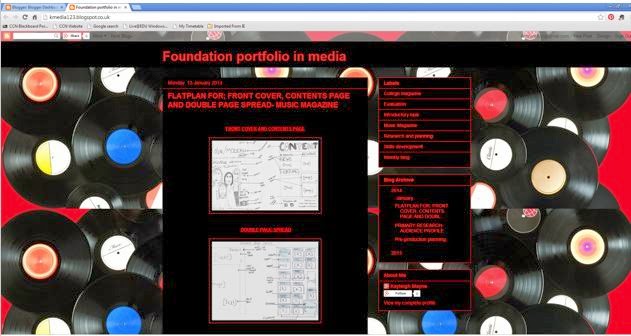A music magazine is a magazine which is completely dedicated to music and the music culture, this could include numerous articles such as interviews, photo shoots, news about music, reviews on songs, artist, albums, concert reviews, upcoming music events to name a few.
Typical elements found in a music magazine:
artwork – the illustrated material that is ready for printing.
ascenders – parts of letters e.g. k, f and d which extend above the average height of other letters in a typeface.
bad break – this is when a word has been hyphenated in a clumsy way to fit into a certain space.
banner – a headline that spreads across the whole of a page, often in a diagonal fashion.
bar code – on a magazine’s cover the black and white serial number which can be read by a computer or app.
bleed (bled off) – where the printed matter extends to the edge of the page.
body copy – the main text.
byline – the name of the writer as it appears with the story.
caption – words that accompany a picture or illustration.
coated paper – paper that has been treated to give it a glossy finish, suitable for high-quality printing.
consumer magazines – publications that provide their readers with information and entertainment in relation to their leisure time.
copy – words written by journalists for publication.
cover lines – words on the cover of a magazine which indicate what articles can be found inside.
cover price – price paid by reader who buys a magazine from a retailer. It is indicated on the cover.
descenders – the parts of letters such as g, p and y which extend below the basic x-height of a letter.
double-page spread (dps) – a story which takes up two facing pages.
drop cap – a capital letter, in a size larger than the body coy type, which is used at the beginning of a story or a section of a
story to enhance the look of a page. It drops down into the text below, which is arranged around it.
End blob or symbol – characteristic symbol used by a magazine to denote the end of a story.
fanzines – amateur magazines produced out of devotion to the topic (such as a rock group or a football club) rather than with a
view to making money.
fit – to cut copy so that it fits an allocated space exactly.
flannel panel – the place where the magazine gives it address and other contact information as well as the list of staff and the
copyright notice.
flatplan – the one-dimensional diagram of a magazine used in planning to show what will appear on which page.
flush – type that is set so that one margin is even, as in ‘flush left’, meaning the left margin is straight while the right one is ragged.
folio – page.
grid – established shape for the design of the pages of a magazine which determines such things as the width of columns and
margins.
gutter – the vertical space between columns or between two pages in the same spread.
headline or heading – words in larger or distinctive type which attract the reader to a story.
house style – the collection of guidelines about English useage and editorial policy established by a publisher for a publication as a way of ensuring consistency.
justified – typeset copy in which both left and right margins are flush, i.e. without indentations.
landscape – describes pictures which are wider than they are deep.
layout – the design for a page.
lead – the main story on a page or in a publication. Also, an idea for a story or a tip-off for one.
masthead – now a common term for the titlepiece or logo of a magazine.
niche market – a relatively small group or sector of potential purchasers of a publication, usually with a shared specialist
interest.
positions – on a magazine refers to the site where particular elements will be placed. Editorial positions are where editorial material is found. Advertisers pay higher rates for certain special positions such as the back page, facing matter, first right-
hand page.
pull-quote – a few words taken from the following text and set in a contrasting type to be used as a visual device to break up the
text as well as an enticement to read the story.
range right – type that is flush or straight on the right-hand side of the column.
readership – the number of readers of a magazine. Distinct from circulation which is the number of copies sold or distributed.
reversed out – type printed in white on a black or on a tinted background.
sans serif – typeface whose letters don’t have serifs.
serif – the small embellishing strokes at the ends of letters in serif typeface.
sidebar – a complementary story or additional material relating to the main text which is placed in a box or a panel at the side.
spot colour – a colour other than black which can be used throughout a publication or on individual pages.
strapline – subsidiary headline that expands on the main headline and runs above it.
typeface - the letters in a given family of type


